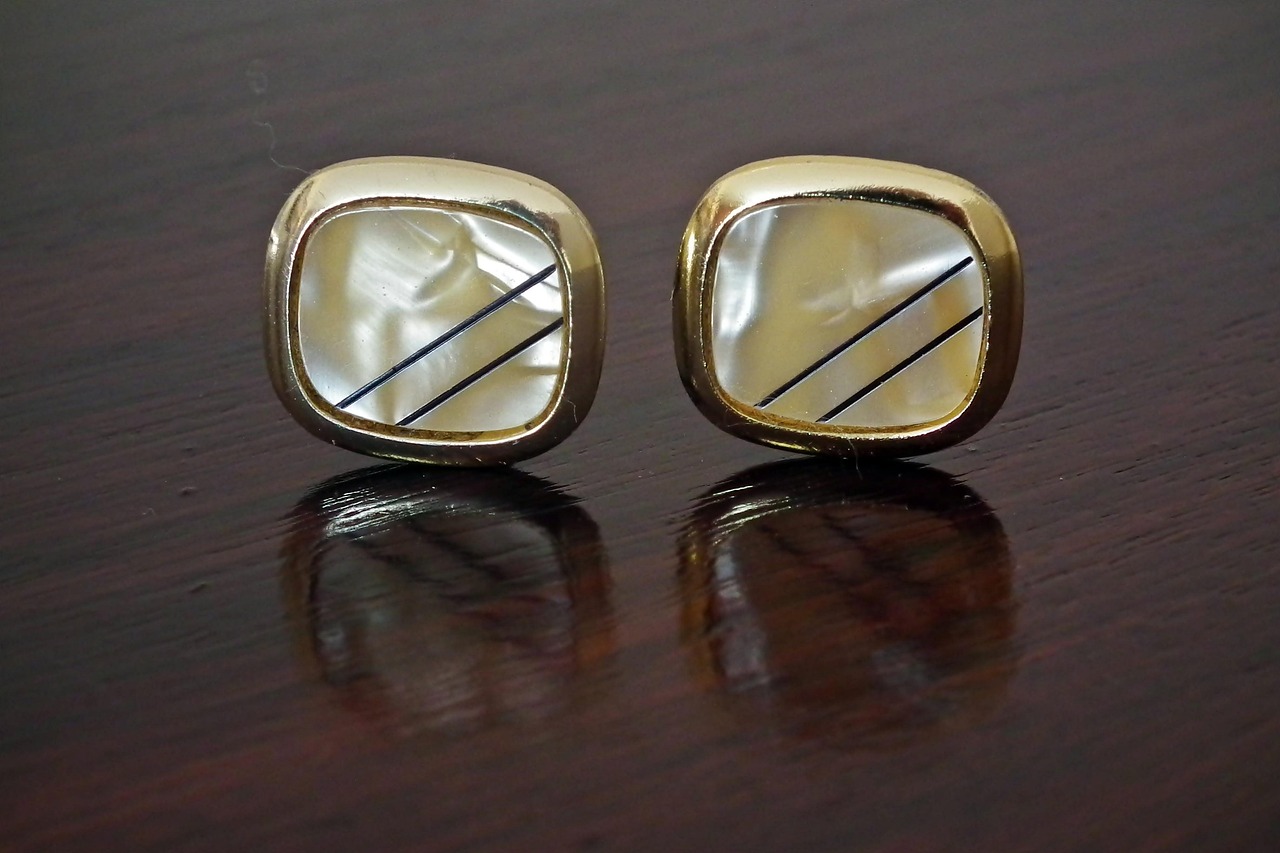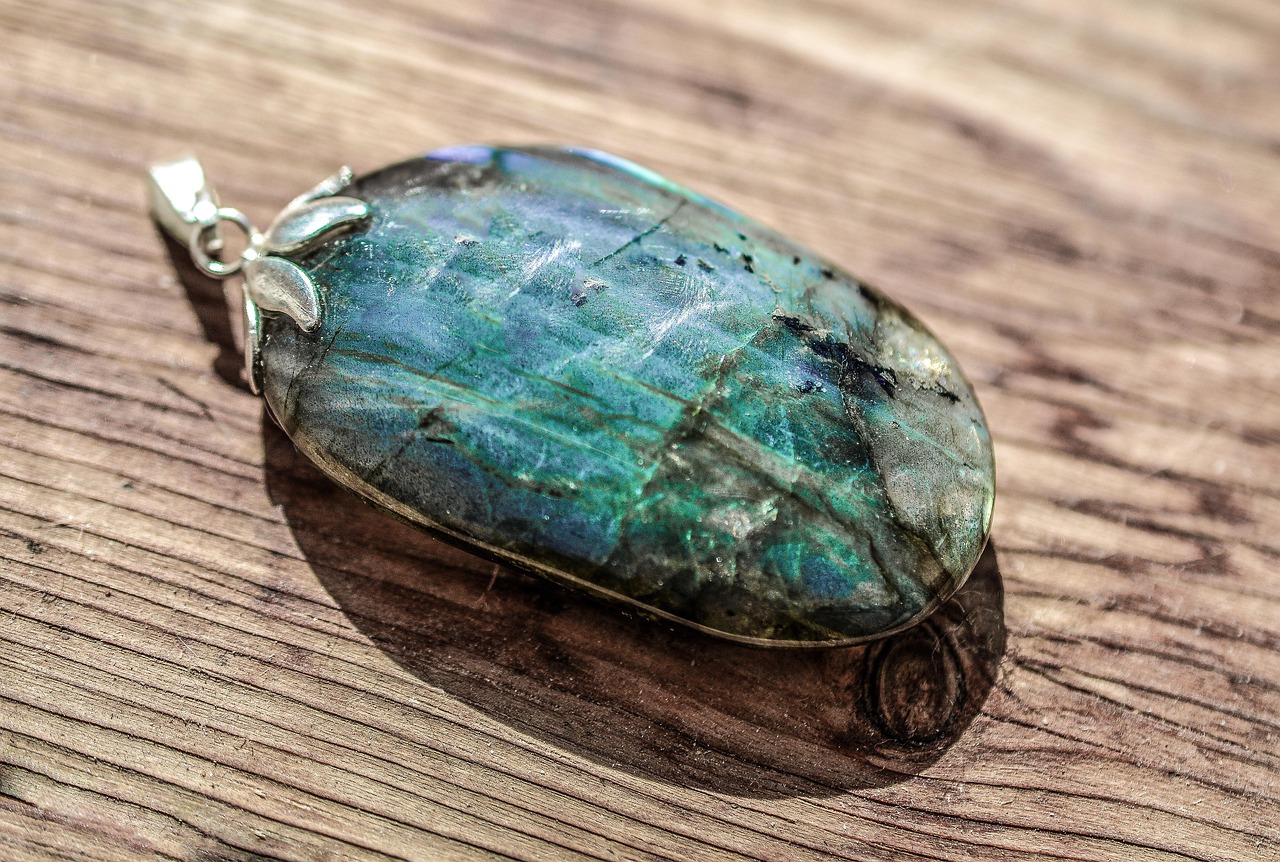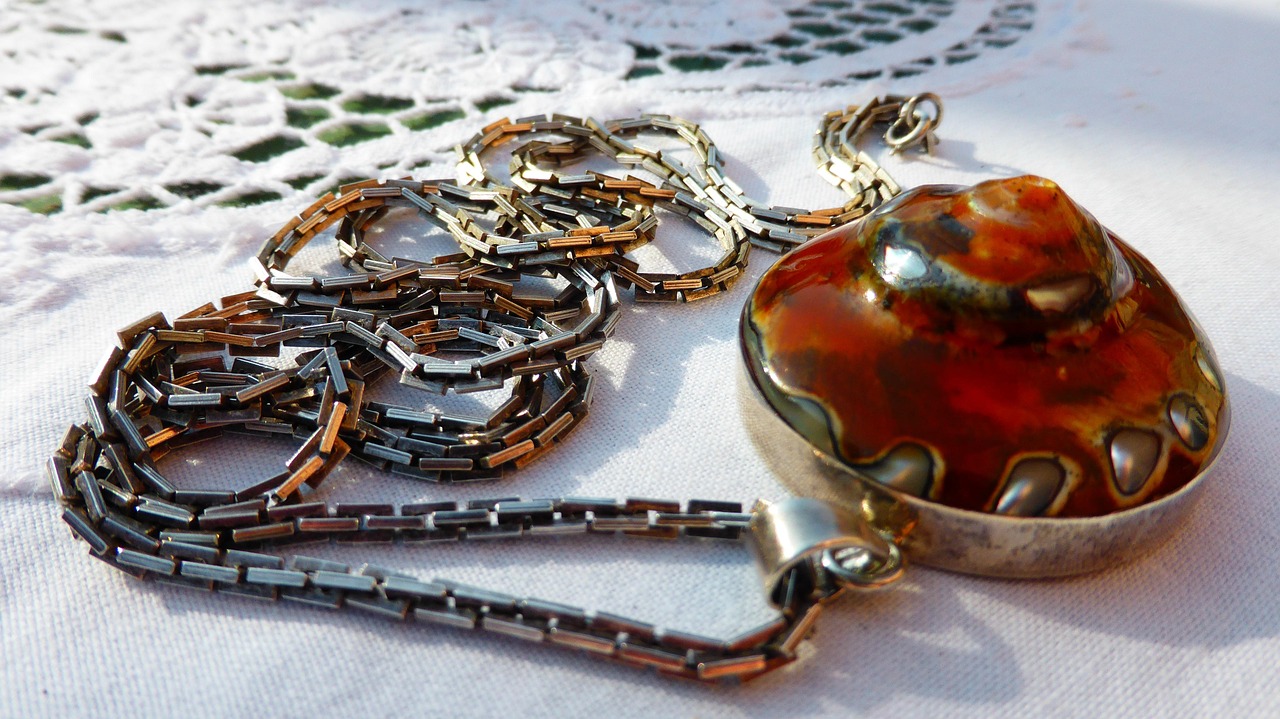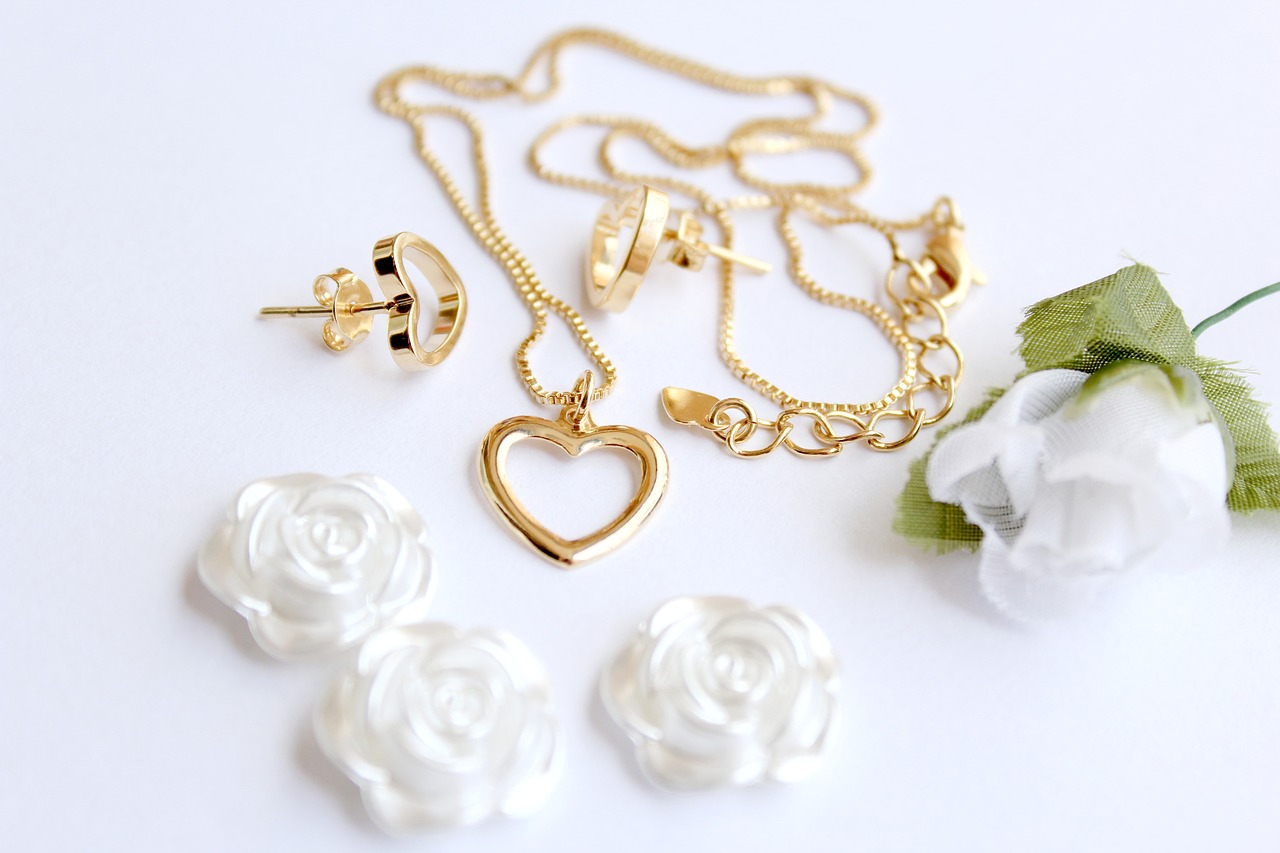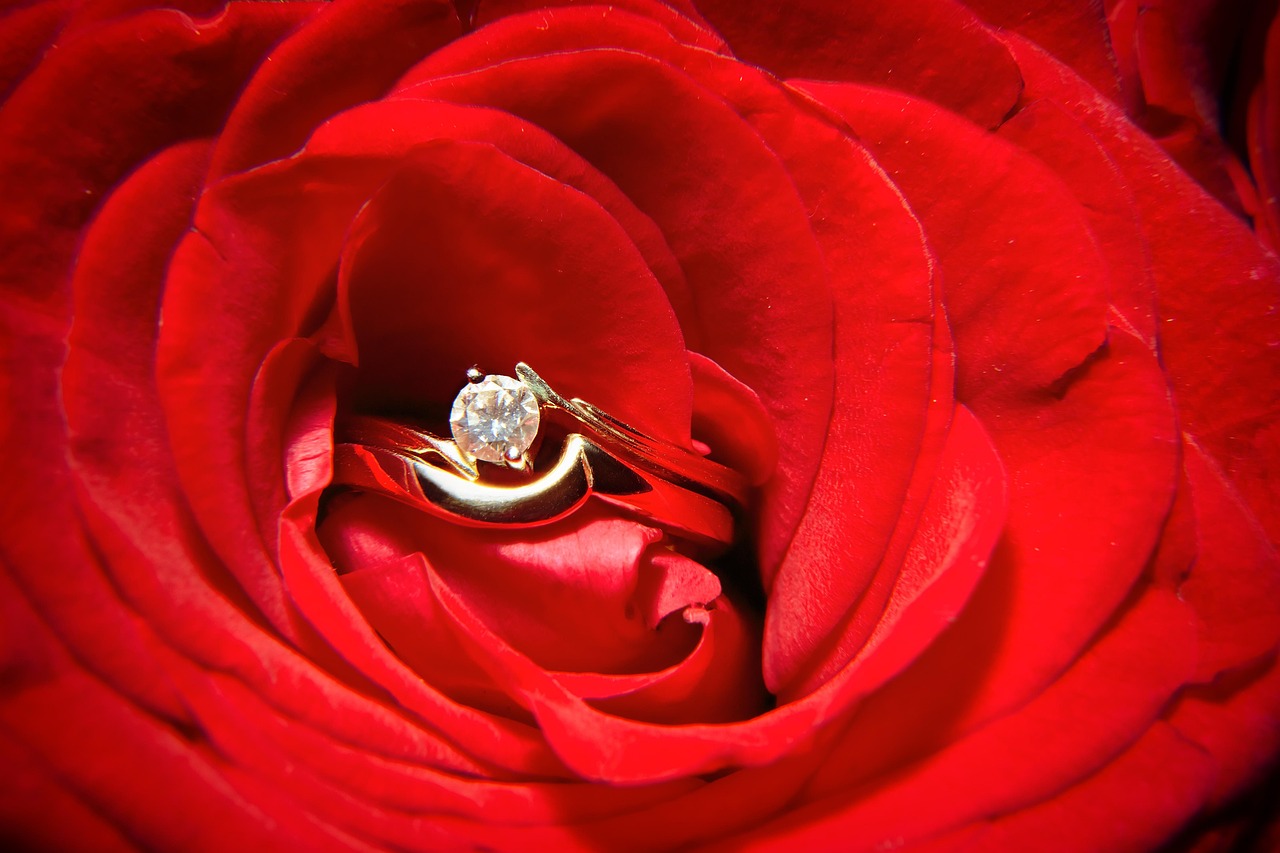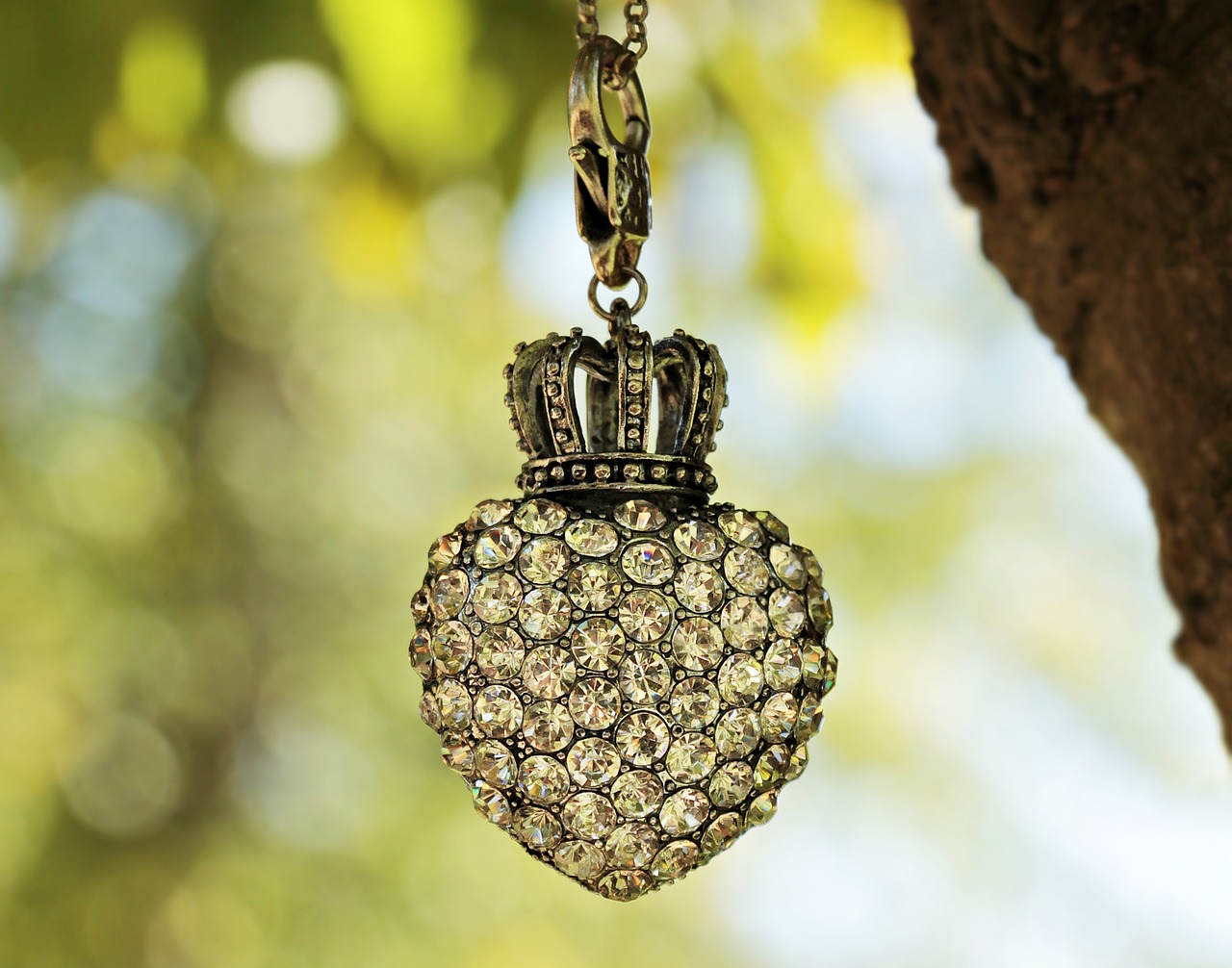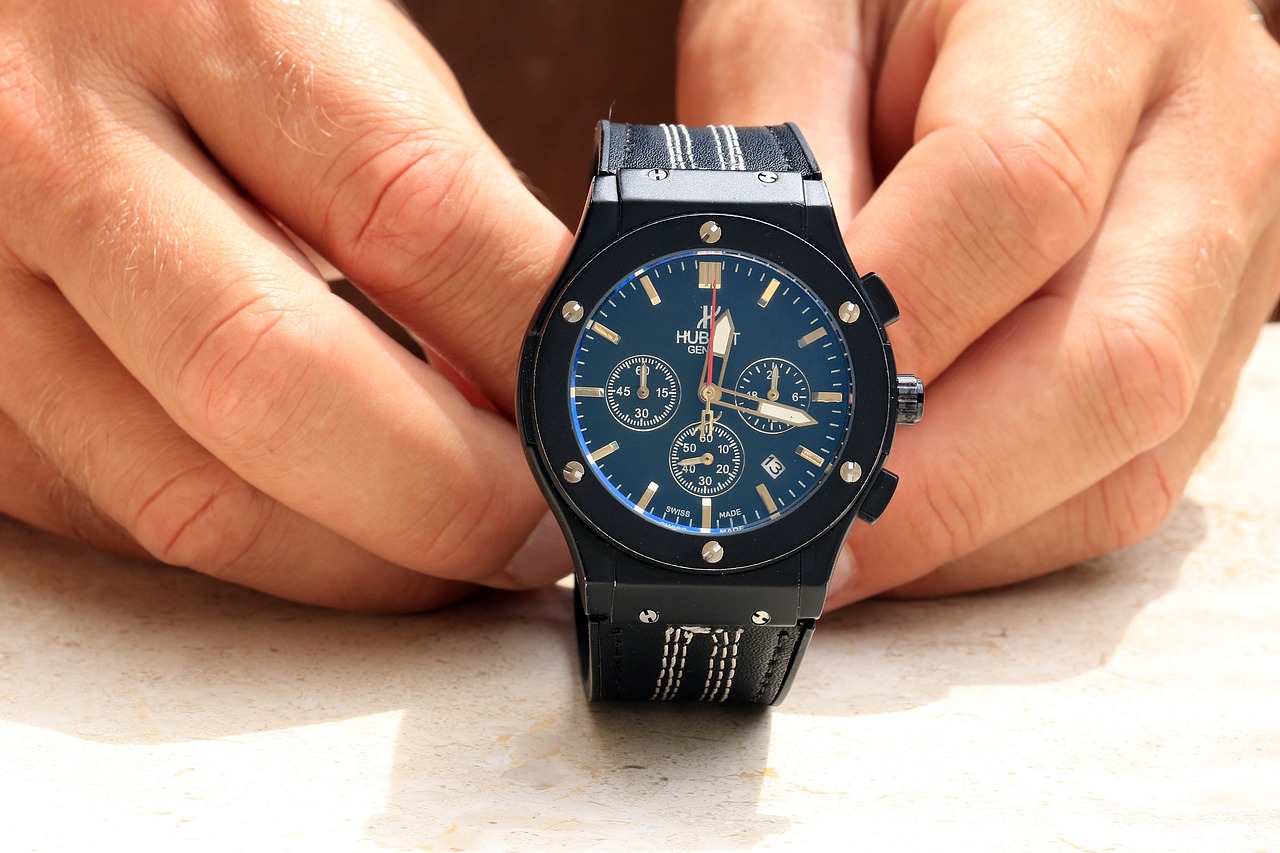Designing memorial jewelry is a heartfelt way to honor and remember loved ones who have passed away. This unique form of jewelry serves not only as a beautiful accessory but also as a tangible reminder of cherished memories and connections. In this article, we will delve into the emotional significance of memorial jewelry and provide practical tips for creating personalized pieces that resonate deeply with the wearer.
Memorial jewelry is a specialized type of jewelry designed to commemorate someone who has died. It often incorporates elements that reflect the personality, interests, or memories of the deceased. This can include engravings, birthstones, or even small compartments for holding ashes or locks of hair. The beauty of memorial jewelry lies in its ability to encapsulate the essence of a loved one, allowing the wearer to carry a piece of their memory with them.
Choosing to wear memorial jewelry is a deeply personal decision. It provides comfort during times of grief and serves as a constant reminder of the love shared. Many individuals find solace in having a piece of their loved one close by, which can help in the healing process. Memorial jewelry can also be a conversation starter, allowing wearers to share stories and memories, keeping the spirit of their loved ones alive.
When designing memorial jewelry, selecting the right materials is crucial. Considerations include:
- Durability: Choose materials that will withstand daily wear.
- Aesthetics: Select colors and finishes that appeal to personal taste.
- Emotional Significance: Some materials may hold special meaning, such as gold for its timelessness or silver for its affordability.
Common materials for memorial jewelry include:
- Gold: Symbolizes purity and eternity.
- Silver: Represents clarity and strength.
- Gemstones: Each gemstone carries its own meaning and can be chosen based on the loved one’s preferences.
- Cremation Ashes: Some designs allow for the incorporation of ashes, creating a deeply personal piece.
Incorporating personal elements can greatly enhance the emotional value of memorial jewelry. Options include:
- Fingerprints: Capturing a loved one’s fingerprint can create a unique and personal piece.
- Initials: Engraving initials adds a personal touch.
- Birthstones: Including birthstones in the design can symbolize the loved one’s life.
There is a wide array of styles available for memorial jewelry. Some popular options include:
- Lockets: These can hold photos or small mementos.
- Bracelets: Charm bracelets can feature symbols that represent memories.
- Rings: Engraved rings can carry meaningful dates or messages.
Personalization transforms memorial jewelry into a unique tribute. Consider the following options:
- Engraving: Names, dates, or quotes can be engraved to add a personal touch.
- Gemstone Selection: Choose specific gemstones that hold significance.
- Custom Designs: Work with a jeweler to create a piece that reflects the loved one’s legacy.
Finding quality memorial jewelry is essential. Look for reputable jewelers who specialize in custom designs. Check for:
- Experience: Ensure the jeweler has a history of creating memorial pieces.
- Customer Reviews: Positive feedback can indicate quality and service.
- Portfolio: A strong portfolio showcases the jeweler’s craftsmanship and attention to detail.
Proper care is vital for preserving the beauty and significance of memorial jewelry. Recommended care includes:
- Cleaning: Use gentle soap and water or specialized jewelry cleaners to maintain integrity.
- Storage: Store pieces in a soft pouch or jewelry box to prevent scratches and damage.
In conclusion, designing memorial jewelry is a meaningful way to honor and remember loved ones. By selecting the right materials, personalizing elements, and choosing styles that resonate, individuals can create beautiful pieces that serve as lasting tributes.
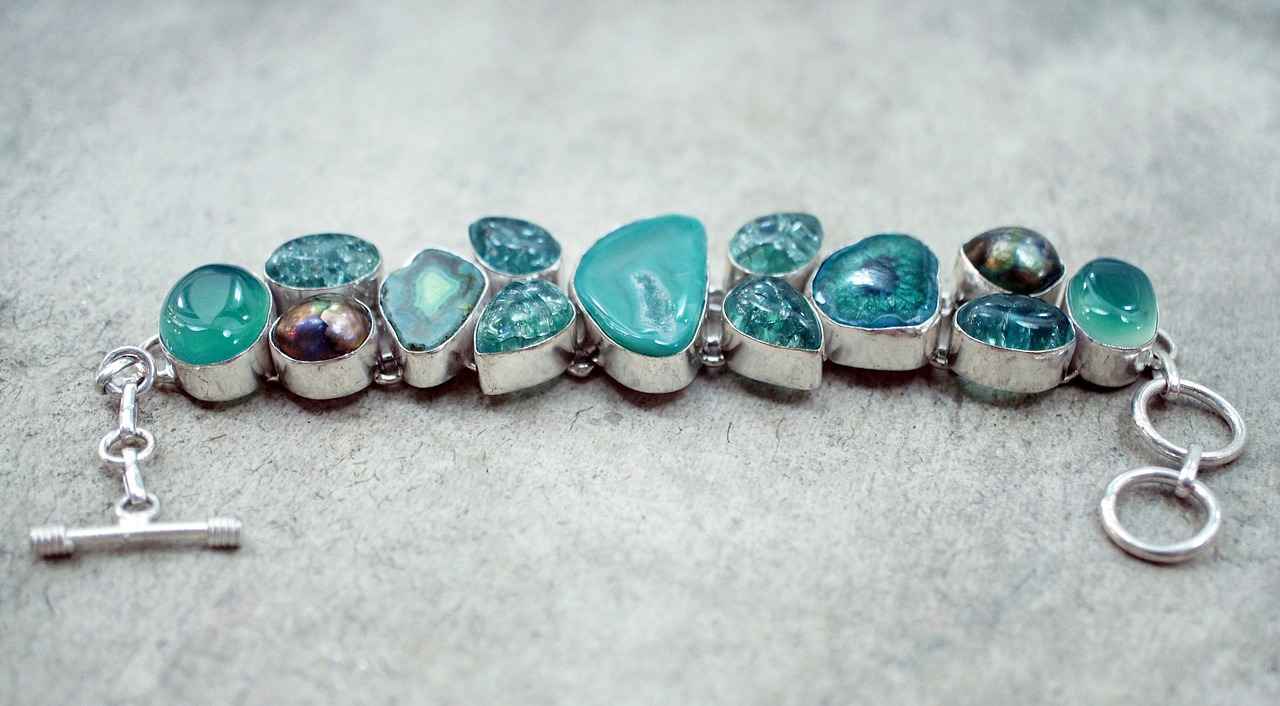
What is Memorial Jewelry?
Memorial jewelry is a heartfelt way to keep the memory of a loved one alive. This unique form of jewelry serves as a tangible reminder of those we’ve lost, often incorporating elements that reflect their personality, interests, and cherished moments. By wearing these pieces, individuals can feel a sense of connection to their loved ones, carrying a part of them wherever they go.
The essence of memorial jewelry lies in its ability to evoke memories and emotions. Each piece can be designed to symbolize something special about the deceased, whether it’s a favorite color, a meaningful symbol, or even a personal item like a fingerprint. This customization allows the wearer to honor their loved one in a way that feels personal and significant.
Choosing memorial jewelry is a deeply personal decision. It provides comfort during times of grief, serving as a physical reminder of the love shared. The act of wearing such jewelry can help individuals navigate their emotions, providing a sense of peace and connection. For many, it transforms the process of mourning into a celebration of life, allowing them to carry their loved one’s spirit with them.
The design process for memorial jewelry is a creative journey that involves selecting materials, styles, and personal elements. Materials can range from traditional metals like gold and silver to more unique options such as cremation ashes or lockets containing small mementos. Each choice reflects the personality and preferences of the loved one being honored.
- Metals: Gold and silver are popular for their durability and classic appeal.
- Gemstones: Birthstones or favorite stones can add color and personal significance.
- Cremation Ashes: Some designs incorporate ashes, creating a deeply personal tribute.
Personalization is key to creating a meaningful piece of memorial jewelry. Options include:
- Engraving: Names, dates, or special messages can be engraved to add a personal touch.
- Incorporating Symbols: Symbols that represent the loved one’s interests or passions can be added.
- Choosing Specific Gemstones: Selecting stones that hold significance can enhance the emotional value of the piece.
There is a wide variety of styles available, each offering different ways to commemorate a loved one. Popular options include:
- Lockets: These can hold photos or small keepsakes, allowing for a personal touch.
- Bracelets: Charm bracelets can feature symbols or charms that represent memories.
- Rings: Engraved rings can serve as a constant reminder of the loved one.
Finding quality memorial jewelry involves researching reputable jewelers who specialize in custom designs. Look for artisans with positive reviews and a strong portfolio that showcases their craftsmanship. It’s essential to ensure that the materials used are ethically sourced, aligning with personal values.
Caring for memorial jewelry is vital to maintain its beauty and significance. Recommended cleaning methods include using gentle soap and water solutions or specialized jewelry cleaners. Proper storage is also important; keeping the jewelry in a soft pouch or jewelry box can prevent scratches and damage.
In conclusion, memorial jewelry serves as a powerful way to honor and remember loved ones. By choosing the right materials, personalizing designs, and caring for these pieces, individuals can create lasting tributes that keep memories alive.
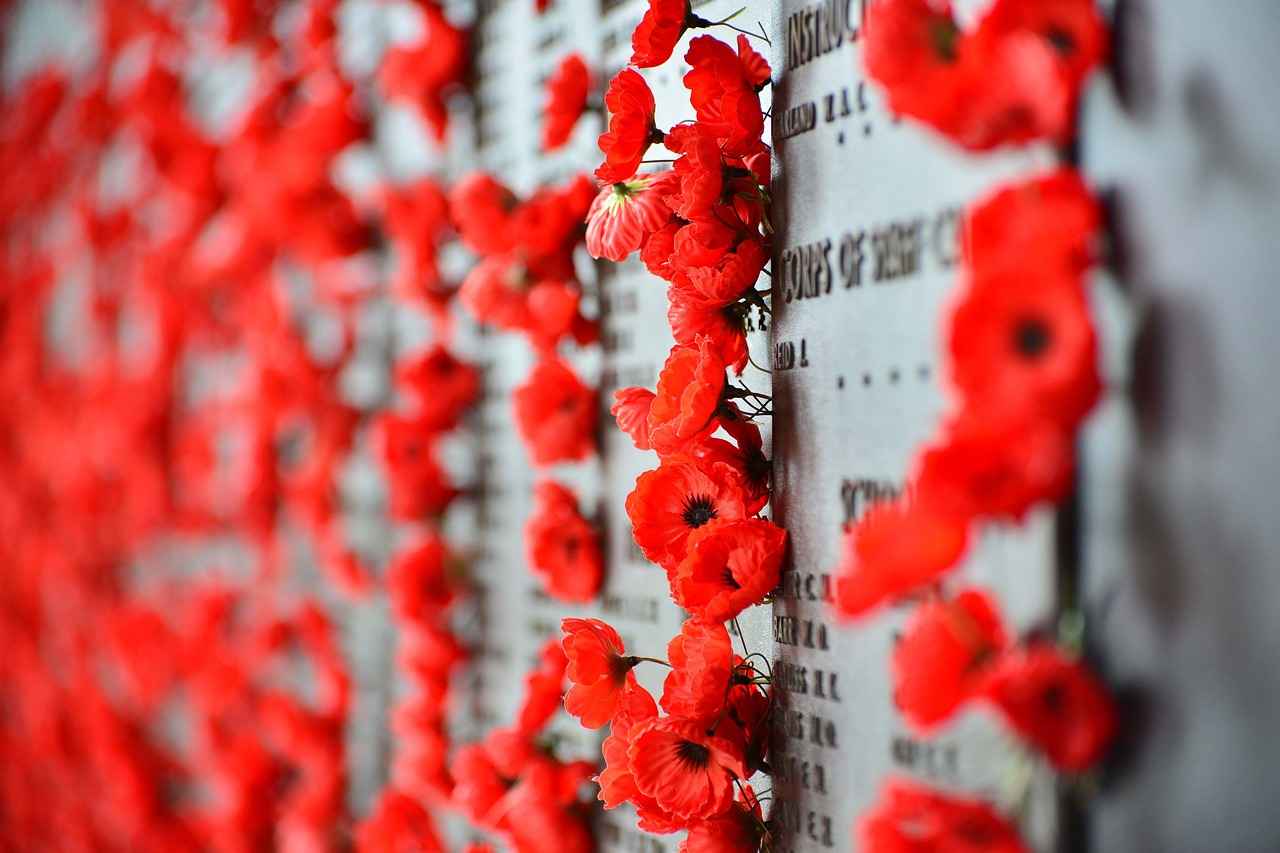
Why Choose Memorial Jewelry?
Memorial jewelry serves as a profound way to honor and remember loved ones who have passed away. It offers individuals a unique opportunity to keep their cherished memories alive, providing a source of comfort during difficult times. This type of jewelry not only represents a physical connection to the deceased but also embodies the emotions and stories that define their legacy.
Choosing memorial jewelry is a deeply personal decision that allows individuals to carry a piece of their loved one with them. This choice can be incredibly meaningful, as it provides a tangible reminder of the bond shared with the deceased. In moments of grief, having such a piece can offer solace, helping to ease the pain of loss.
Wearing memorial jewelry can create a lasting emotional connection. Many people find that having a physical representation of their loved one helps them feel closer, especially during significant life events or milestones. This connection can be comforting, reminding them that their loved one is always with them in spirit.
One of the most compelling reasons to choose memorial jewelry is the ability to personalize it. Many jewelers offer options to customize pieces with initials, birthstones, or even engraved messages. This level of personalization transforms a simple piece of jewelry into a unique tribute that reflects the individual’s personality and the relationship shared.
Memorial jewelry comes in a wide array of styles, from traditional lockets that hold photos to modern bracelets adorned with charms that symbolize special memories. This variety ensures that individuals can find a piece that resonates with their personal taste and the memory of their loved one. Popular designs include:
- Lockets: These can hold small photos or mementos.
- Charm Bracelets: Each charm can represent a significant moment or trait of the deceased.
- Engraved Rings: Rings can be inscribed with names, dates, or meaningful quotes.
Different materials used in memorial jewelry can also carry significant meaning. For instance, gold symbolizes purity and eternity, while silver represents clarity and truth. Gemstones can be selected based on their meanings or the loved one’s preferences, adding another layer of significance to the piece.
Ultimately, memorial jewelry is about creating a lasting legacy. It serves as a reminder of the love and memories shared, allowing individuals to keep their loved ones close, even in their absence. Whether it’s a simple pendant or an intricately designed piece, the value lies in the emotions it evokes and the stories it tells.
Choosing memorial jewelry is an intimate journey that reflects personal grief, love, and remembrance. By selecting a piece that resonates on a personal level, individuals can create a meaningful tribute that honors their loved one’s memory while providing comfort during their healing process.
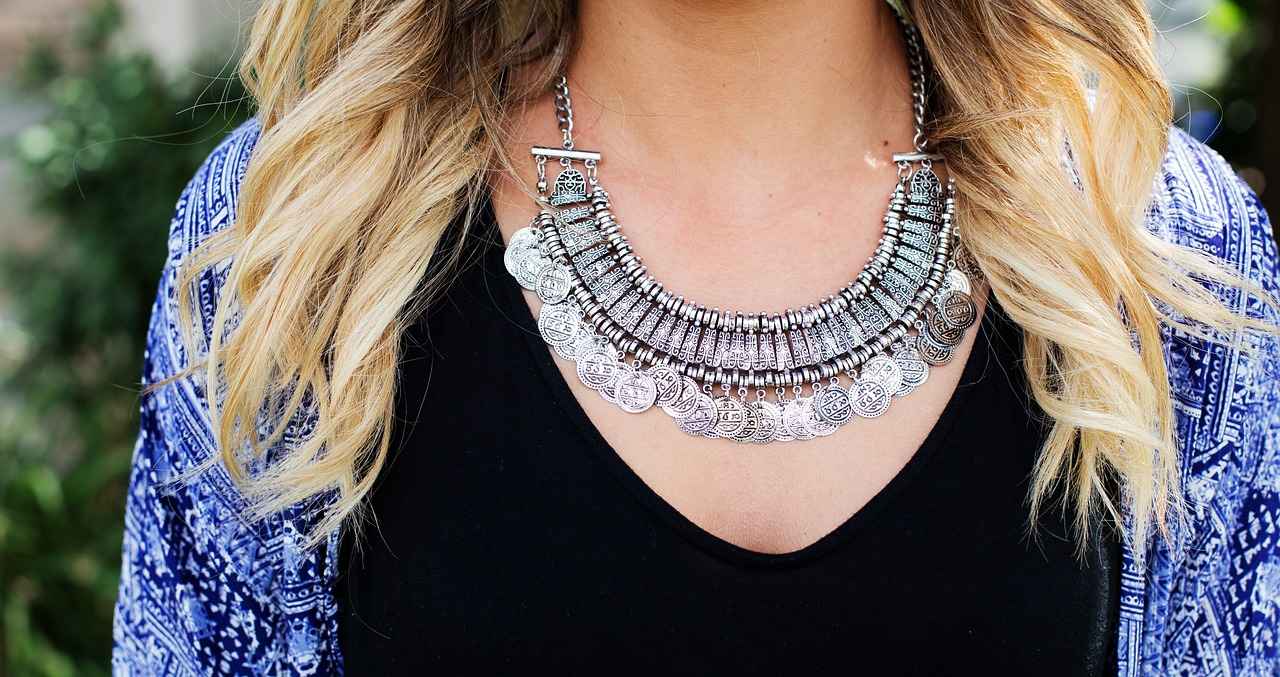
How to Select the Right Materials?
When it comes to creating memorial jewelry, selecting the right materials is a vital step in the design process. The materials chosen not only contribute to the overall aesthetic but also hold significant emotional value. This section will explore various factors to consider when selecting materials for memorial jewelry, ensuring that the final piece is both beautiful and meaningful.
The choice of materials in memorial jewelry can affect its durability, aesthetic appeal, and the emotional significance it carries. Each material has its unique qualities that can enhance the connection to the loved one being honored. For instance, some may prefer the timeless elegance of gold, while others might resonate more with the understated charm of silver or the vibrant hues of gemstones.
Durability is essential in memorial jewelry, especially if the piece is intended for daily wear. Gold and silver are popular choices due to their resistance to tarnishing and scratching. Additionally, stainless steel has gained popularity for its strength and modern appeal. When selecting materials, consider how often the piece will be worn and the lifestyle of the wearer.
The aesthetic qualities of the materials can greatly influence the design of the jewelry. Gold offers a classic look, while silver provides a more contemporary feel. Gemstones can add a splash of color and personal significance, such as using a loved one’s birthstone or a favorite color. The visual appeal of the materials should align with the wearer’s taste and the memory of the loved one.
Each material can carry its own emotional weight. For example, gold is often associated with love and eternity, making it a fitting choice for memorial jewelry. Silver, on the other hand, symbolizes purity and clarity. Gemstones can represent various meanings based on their colors and properties, adding another layer of significance to the piece. When selecting materials, think about what each choice represents and how it connects to the memory being honored.
- Gold: Known for its timeless beauty and durability, gold is a popular choice for memorial pieces.
- Silver: A more affordable option, silver offers a sleek aesthetic and is easy to maintain.
- Gemstones: From diamonds to sapphires, gemstones can add color and personal significance.
- Cremation Ashes: Some designs incorporate ashes, allowing for a deeply personal connection.
When selecting materials for memorial jewelry, consider the following:
- Assess Durability: Think about how often the jewelry will be worn and choose materials that can withstand daily use.
- Evaluate Aesthetic Preferences: Consider the style and look that resonates with you or the memory of your loved one.
- Reflect on Emotional Significance: Choose materials that hold personal meaning or symbolize your relationship with the deceased.
In conclusion, selecting the right materials for memorial jewelry is a multifaceted decision that involves considering durability, aesthetics, and emotional significance. By taking the time to choose wisely, you can create a piece that not only honors your loved one but also serves as a cherished keepsake for years to come.
What Types of Materials Are Commonly Used?
When it comes to memorial jewelry, the choice of materials plays a vital role in both the aesthetic appeal and the emotional connection of the piece. Different materials not only influence the overall look but also carry unique symbolism and meaning, making the selection process deeply personal. Here, we explore the common materials used in memorial jewelry and their significance.
Gold is one of the most popular choices for memorial jewelry due to its durability and timeless elegance. Available in various colors such as yellow, white, and rose, gold can be customized to suit individual preferences. The precious metal symbolizes wealth and eternity, making it a fitting tribute for honoring a loved one.
Silver is another frequently used metal in memorial jewelry. Known for its bright, reflective quality, silver represents purity and clarity. It is often chosen for its affordability compared to gold, allowing for intricate designs without breaking the bank. Silver can be easily engraved, making it an excellent option for personalized pieces.
Incorporating gemstones into memorial jewelry can enhance its beauty and emotional significance. Different gemstones carry various meanings. For example:
- Amethyst: Represents peace and tranquility.
- Rose Quartz: Symbolizes love and compassion.
- Birthstones: Personalized gemstones that reflect the loved one’s month of birth, adding a unique touch.
Choosing the right gemstone can create a deeper connection to the memory of the departed.
One of the most poignant materials used in memorial jewelry is cremation ashes. These ashes can be incorporated into the design, often encased in glass or resin, allowing wearers to carry a tangible piece of their loved one with them. This method provides a profound sense of closeness and serves as a constant reminder of the bond shared.
Beyond traditional metals and gemstones, some memorial jewelry incorporates alternative materials such as wood or fabric. Wooden pieces can symbolize growth and life, while fabric, especially if it holds sentimental value, can evoke memories of the loved one. These materials often add a unique, personal touch to the jewelry.
When selecting materials for memorial jewelry, consider the following factors:
- Durability: Ensure the material can withstand daily wear.
- Aesthetic Appeal: Choose materials that resonate with your personal style.
- Emotional Significance: Reflect on what each material represents to you and your loved one.
Ultimately, the choice of materials should resonate with the memories you wish to honor, making the piece truly special.
How to Incorporate Personal Elements?
Designing memorial jewelry is a deeply personal journey that allows individuals to celebrate and honor the memories of their loved ones. One of the most impactful ways to achieve this is by incorporating personal elements into the design. These elements not only enhance the aesthetic appeal of the jewelry but also create a profound emotional connection, making each piece truly unique.
Personal elements serve as a tangible reminder of the bond shared with the deceased. When you incorporate items like fingerprints, initials, or birthstones, you create a piece that resonates on a deeper emotional level. Such details transform a simple piece of jewelry into a cherished keepsake that tells a story.
- Fingerprints: Engraving a loved one’s fingerprint onto a pendant or ring adds a deeply personal touch. This unique pattern can evoke fond memories and a sense of closeness.
- Initials: Incorporating initials into the design can serve as a subtle yet powerful reminder of the person being honored. Whether engraved or styled into a charm, initials can add a personal flair.
- Birthstones: Utilizing birthstones not only adds color but also symbolizes the individual’s life and personality. Each stone carries its own meaning, making it a thoughtful addition to the jewelry.
- Special Dates: Engraving significant dates, such as birthdays or anniversaries, can provide a poignant reminder of shared moments and milestones.
When selecting personal elements for memorial jewelry, consider what resonates most with you and your memories of the loved one. Ask yourself:
- What symbols or items best represent their personality?
- Are there specific colors or stones that they loved?
- How do you want to feel when wearing this piece?
Taking the time to reflect on these questions can guide you in choosing elements that will create a meaningful and personalized tribute.
Don’t hesitate to mix and match various personal elements. For instance, a locket that holds a photo can be paired with a birthstone and engraved initials. This combination not only enhances the visual appeal but also layers the emotional significance of the piece.
When designing memorial jewelry, collaborating with a skilled jeweler can help bring your vision to life. A professional can provide insights on how to best incorporate personal elements and ensure that the final product is both aesthetically pleasing and durable. Be open to their suggestions while also communicating your ideas clearly.
Ultimately, the goal of incorporating personal elements is to create a piece that resonates with you. The act of wearing memorial jewelry adorned with fingerprints, initials, or birthstones can evoke cherished memories and provide comfort during times of grief. Each glance at the piece can serve as a reminder of the love shared and the legacy left behind.
In conclusion, incorporating personal elements into memorial jewelry not only enhances its beauty but also deepens the emotional connection to the piece. By thoughtfully selecting and combining these elements, you can create a unique tribute that celebrates the life and memory of your loved one.
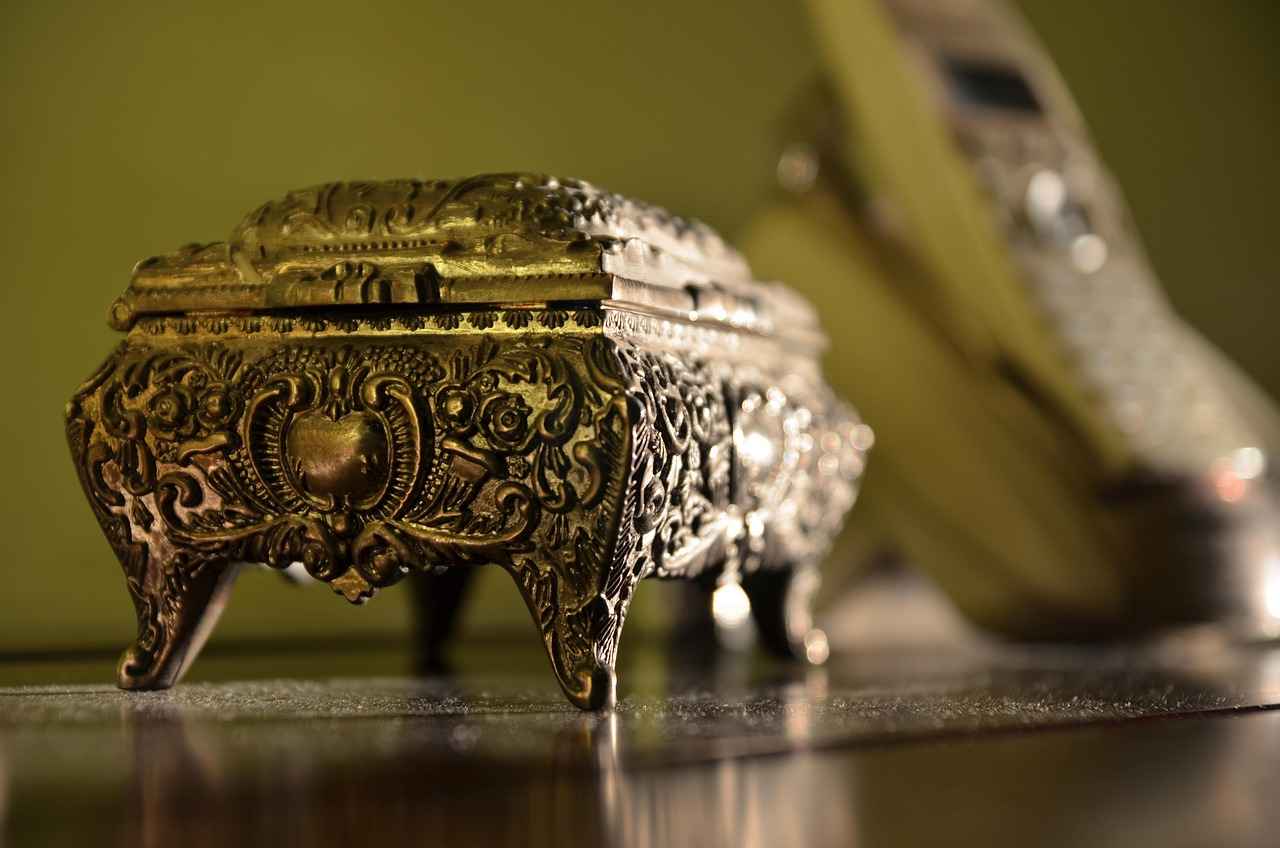
What Styles of Memorial Jewelry Are Available?
Memorial jewelry serves as a powerful way to keep the memory of a loved one alive. It allows individuals to carry a piece of their cherished memories with them, offering comfort during moments of grief. Understanding the various styles of memorial jewelry can help you choose a piece that resonates with your emotions and personal style.
There are numerous styles of memorial jewelry available today, each designed to honor a loved one in a unique way. From classic to contemporary designs, these pieces can be customized to reflect the personality and memory of the deceased.
- Lockets: Traditional lockets are a timeless choice for memorial jewelry. These pieces often feature a small compartment that can hold a photograph or a lock of hair, allowing the wearer to keep their loved one close.
- Bracelets: Modern bracelets can be adorned with charms that symbolize significant moments or shared experiences. Some designs even incorporate ashes or engraved messages, making them a deeply personal tribute.
- Rings: Rings can be designed with engravings or stones that represent the loved one. Birthstones, for instance, can add a personal touch, while engraved messages can serve as a constant reminder of their presence.
- Pendants: Pendants can be worn on necklaces and often feature designs that are both stylish and meaningful. Some pendants are designed to hold a small amount of cremation ash, allowing for a close connection to the departed.
- Keychains: A practical yet sentimental option, memorial keychains can be customized with initials, dates, or symbols that remind the owner of their loved one every day.
Selecting a style that resonates with both the wearer and the memory of the loved one is essential. Consider the following factors:
- Personal Taste: Reflect on the preferences of the deceased and the wearer. Would they prefer something classic or modern? Elegant or casual?
- Lifestyle: Think about how the jewelry will be worn. For someone who prefers minimalistic styles, a simple pendant or bracelet may be ideal.
- Significance of the Design: Choose symbols or designs that hold special meaning, such as a favorite flower or a shared memory.
Popular designs for memorial jewelry often incorporate personal elements that reflect the deceased’s life and personality:
- Engraved Messages: Engraving a special date, quote, or message can make the piece uniquely personal.
- Symbolic Charms: Charms that represent hobbies, interests, or significant moments can add a layer of meaning to the jewelry.
- Photo Lockets: Lockets that hold cherished photos allow the wearer to keep their loved one close at heart.
In summary, the styles of memorial jewelry available today are as diverse as the memories they honor. By considering personal taste, lifestyle, and the significance of the design, you can select a piece that serves as a lasting tribute to a loved one.
What Are the Popular Designs for Memorial Jewelry?
Memorial jewelry serves as a heartfelt tribute to loved ones who have passed, allowing individuals to keep cherished memories close. There are various designs that resonate deeply with those who seek to honor their memories. This section delves into popular designs that not only reflect personal sentiment but also offer unique ways to express love and remembrance.
One of the most cherished designs in memorial jewelry is the locket. These pieces often feature a small compartment that can hold a photo or a lock of hair, making them a tangible connection to the deceased. Lockets come in various shapes and sizes, and can be crafted from metals like gold or silver, often adorned with intricate designs or engravings that personalize the piece further.
Another popular choice is the charm bracelet. These bracelets can be customized with charms that symbolize significant moments or traits of the loved one. For instance, a heart charm might represent love, while a star could signify guidance. Each charm tells a story, allowing the wearer to carry a piece of their loved one’s essence with them. The beauty of charm bracelets lies in their versatility; they can be added to over time, creating a living memorial that evolves.
Rings engraved with special dates, initials, or meaningful messages are also a favored design. These rings serve as a constant reminder of the bond shared with the departed. Engravings can include anything from a loved one’s name to a significant quote that resonates with the wearer’s memories. The simplicity of a ring can hold profound emotional weight, making it a popular choice for many.
Pendants are another elegant option for memorial jewelry. They can be designed to hold small keepsakes, such as ashes or a piece of fabric from a loved one’s clothing. Pendants often come in various shapes, from hearts to crosses, and can be personalized with engravings. This design allows individuals to wear their memories openly, providing comfort and a sense of connection.
Bracelets that feature engraved messages are also a meaningful choice. These can include quotes that inspired the wearer or phrases that evoke fond memories. The act of wearing a bracelet inscribed with a special message creates a daily reminder of the love shared, making it a comforting accessory during times of grief.
For those seeking a truly unique piece, custom-designed memorial jewelry offers an opportunity for personal expression. Working with a jeweler, individuals can create a design that encapsulates their loved one’s spirit. This might involve incorporating specific gemstones that held meaning or crafting a design that reflects the loved one’s personality. Custom pieces ensure that the jewelry is not only beautiful but also deeply personal.
When selecting a style of memorial jewelry, it’s essential to consider personal taste and the significance of the design. Think about what elements resonate most with the individual’s memories. Whether it’s a locket, charm bracelet, or an engraved ring, the right piece should evoke emotions and serve as a lasting tribute to the loved one.
In conclusion, the world of memorial jewelry is rich with options that allow for personal expression and remembrance. From lockets holding cherished photos to engraved rings that tell a story, each design serves as a unique way to honor a loved one’s legacy.
How to Choose a Style That Resonates?
Choosing a style for memorial jewelry is a deeply personal journey that requires careful thought and reflection. It is essential to select a design that not only resonates with the wearer but also honors the memory of the loved one. This process can be both rewarding and therapeutic, allowing individuals to create a lasting tribute that embodies their unique relationship.
When selecting a style for memorial jewelry, it is crucial to consider the personal taste of the wearer. This includes their preferences in terms of design, color, and overall aesthetic. For instance, someone who appreciates classic elegance may gravitate toward traditional lockets or simple yet sophisticated rings, while a more contemporary individual might prefer modern bracelets or pendants with unique shapes.
The significance of the design plays a vital role in memorial jewelry. It should reflect the essence of the loved one being honored. For example, incorporating symbols that represent shared memories or interests can add a layer of meaning to the piece. A charm bracelet featuring charms that represent special moments or hobbies can serve as a beautiful reminder of the bond shared.
Memorial jewelry is not just an accessory; it serves as a tangible connection to the past. Choosing a style that evokes fond memories can provide comfort during difficult times. Consider designs that allow for personal touches, such as engraving initials or meaningful dates. This personalization transforms the jewelry into a cherished keepsake that tells a story.
- Lockets: These classic pieces often hold a photo or a small memento, allowing the wearer to keep their loved one close.
- Charm Bracelets: A collection of charms can represent different aspects of the loved one’s life, creating a personalized narrative.
- Rings: Engraved rings can serve as a constant reminder of the bond shared, with options to include significant dates or phrases.
- Pendants: Necklaces with pendants can be designed to incorporate ashes or other meaningful materials, making them deeply personal.
In addition to emotional significance, it is essential to consider the practicality of the chosen style. The piece should be comfortable for daily wear and suitable for the wearer’s lifestyle. For instance, someone with an active lifestyle may prefer a durable bracelet over a delicate necklace. Choosing materials that are both beautiful and resilient can ensure that the piece withstands the test of time.
Engaging with a professional jeweler can provide valuable insights into selecting the right style. They can offer guidance on materials, designs, and personalization options that align with the wearer’s vision. Additionally, jewelers can help create custom pieces that embody the essence of the loved one, ensuring that the final product is not only beautiful but also meaningful.
Ultimately, the process of choosing a style for memorial jewelry should be approached with care and thoughtfulness. By considering personal taste, lifestyle, and the significance of the design, individuals can create a piece that truly resonates with their emotions and memories. This jewelry becomes more than just an accessory; it transforms into a heartfelt tribute that honors the legacy of a loved one.
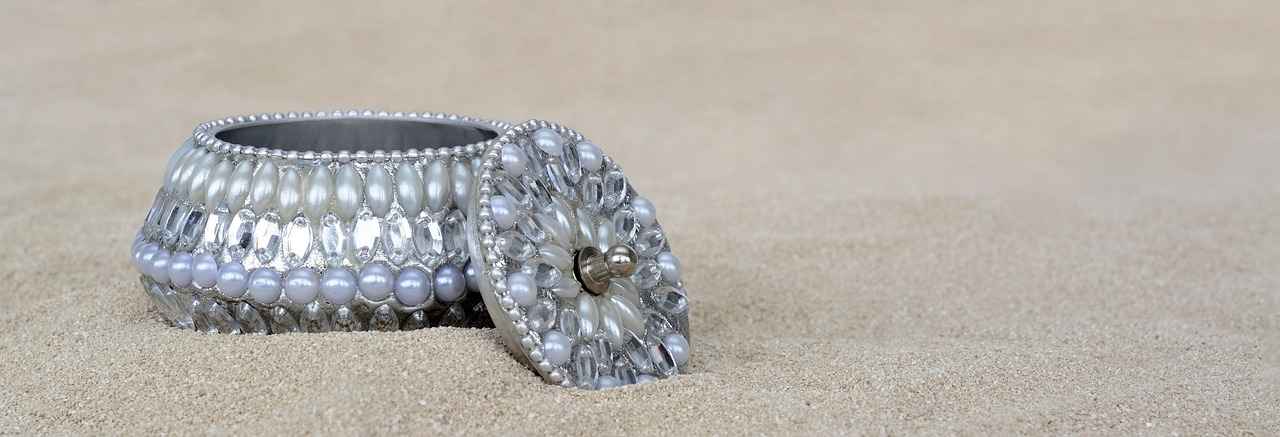
How to Personalize Your Memorial Jewelry?
When it comes to honoring the memory of a loved one, personalization plays a crucial role in transforming memorial jewelry into a truly unique tribute. This article delves into the various ways you can personalize memorial jewelry, ensuring that each piece not only serves as a beautiful reminder but also tells a story that resonates deeply with the wearer.
Personalization adds a layer of emotional significance to memorial jewelry. It allows individuals to create a piece that reflects their loved one’s legacy, personality, and the cherished moments shared together. By incorporating personal elements, the jewelry transcends mere aesthetics and becomes a heartfelt symbol of remembrance.
- Engraving: One of the most common methods of personalization is engraving. You can engrave names, dates, or even meaningful quotes that capture the essence of your loved one. This simple yet impactful addition can make the piece feel more intimate.
- Gemstone Selection: Choosing specific gemstones can also enhance the personal connection. Opt for the loved one’s favorite colors or birthstones to create a vibrant and meaningful representation. Each gemstone carries its own symbolism, adding depth to the piece.
- Custom Designs: For those seeking something truly unique, designing custom pieces can be an excellent option. Collaborating with a jeweler to create a one-of-a-kind design allows you to incorporate various elements that reflect your loved one’s personality and interests.
When considering engraving, think about what words or symbols would best encapsulate your loved one’s spirit. Options can range from simple initials to elaborate designs that tell a story. Choosing the right engraving can evoke memories and emotions every time you wear the piece.
Gemstones can significantly alter the look and feel of memorial jewelry. When selecting gemstones, consider their meanings and how they relate to your loved one. For instance, amethyst symbolizes peace and healing, while sapphire represents wisdom and loyalty. Think about the attributes that resonate with the memory you wish to honor.
Designing a custom piece requires thoughtful consideration. Start by gathering ideas about what elements you want to include. This could involve sketches, photographs, or even a mood board that captures the essence of your loved one. Collaborate with a skilled jeweler who can bring your vision to life, ensuring that the final product is a fitting tribute.
To achieve a meaningful personalization, reflect on the qualities that made your loved one special. Consider their hobbies, passions, and values. This reflection will guide your choices in engraving, gemstone selection, and overall design, ensuring that the memorial jewelry is not just a piece of adornment but a true representation of their legacy.
Finding a reputable jeweler who specializes in memorial jewelry is essential for achieving the desired level of personalization. Look for reviews and testimonials to gauge their expertise. A skilled jeweler will be able to offer suggestions and insights that enhance your vision, ensuring the final piece is both beautiful and meaningful.
In conclusion, personalizing memorial jewelry is a profound way to honor and remember loved ones. By incorporating unique elements such as engraving, gemstone selection, and custom designs, you can create a piece that serves as a lasting tribute, filled with love and cherished memories.
What Engraving Options Are Available?
Engraving options for memorial jewelry provide a unique avenue for personalization, allowing individuals to create a lasting tribute to their loved ones. By selecting meaningful engravings, one can transform a simple piece of jewelry into a cherished keepsake that carries emotional significance.
Engraving adds a deeply personal touch to memorial jewelry, making it a reflection of the deceased’s life and personality. This customization can evoke memories and emotions, serving as a comforting reminder of the bond shared. Whether it’s a name, date, or a special message, engraving allows the wearer to keep their loved one close.
- Names: Engraving the full name of the loved one is a classic choice that ensures their memory is preserved.
- Dates: Important dates, such as birth dates or anniversaries, can be engraved to mark significant moments.
- Quotes: Meaningful quotes or phrases that resonate with the deceased’s life or beliefs can provide inspiration and comfort.
- Symbols: Personal symbols, such as hearts, infinity signs, or religious icons, can also be engraved to represent the unique relationship.
- Initials: Using initials can offer a subtle yet personal touch, keeping the memory alive without overwhelming the design.
Choosing the right engraving involves thoughtful consideration. Reflect on what would best represent the deceased’s personality and the relationship shared. Here are some tips:
- Personal Connection: Select words or symbols that hold special meaning for both you and your loved one.
- Length of Text: Keep in mind the space available on the jewelry; shorter phrases may be more suitable for smaller pieces.
- Font Style: Choose a font that reflects the personality of the deceased; elegant scripts may suit someone with a romantic spirit, while bold fonts may represent strength.
Custom engraving not only personalizes the jewelry but also enhances its emotional value. Here are some benefits:
- Unique Tribute: Custom engravings ensure that the piece is one-of-a-kind, making it a true representation of the individual.
- Emotional Connection: Wearing engraved jewelry can foster a sense of closeness, providing comfort during moments of grief.
- Conversation Starter: Engraved pieces often invite stories and memories, allowing loved ones to share their experiences and keep the memory alive.
Finding a reputable jeweler for engraving is essential. Look for jewelers who specialize in memorial jewelry and have experience with custom designs. Check reviews and portfolios to ensure quality craftsmanship. Many jewelers offer online services, making it easier to create a personalized piece from the comfort of your home.
In conclusion, engraving options for memorial jewelry are vast and varied, allowing for significant personalization that honors the memory of the deceased. By choosing meaningful engravings, individuals can create a lasting tribute that serves as a constant reminder of the love shared.
How to Choose the Right Gemstones?
Choosing the right gemstones for memorial jewelry can significantly enhance its emotional resonance and aesthetic appeal. Gemstones not only add vibrant colors but also carry various meanings that can reflect the personality and spirit of the loved one being honored. When selecting gemstones, it is essential to consider personal connections, such as the deceased’s favorite colors or their birthstones, to create a deeply meaningful tribute.
Gemstones serve as a powerful symbol in memorial jewelry, representing not just beauty but also emotional significance. Each gemstone has its own unique properties and meanings, making them an excellent choice for personalization. For instance, amethyst is often associated with peace and tranquility, while rose quartz symbolizes love and compassion. Choosing a gemstone that resonates with the memory of the loved one can transform a simple piece of jewelry into a cherished keepsake.
- Consider Favorite Colors: Reflect on the loved one’s favorite colors. Incorporating these hues can evoke memories and emotions associated with them.
- Birthstones: Birthstones hold special significance and can create a personal connection. For example, if the loved one was born in June, you might choose pearl or alexandrite.
- Symbolic Meanings: Research the meanings behind various gemstones. Selecting stones that reflect the loved one’s personality can add another layer of significance.
Several gemstones are commonly used in memorial jewelry, each offering unique qualities:
| Gemstone | Meaning | Color |
|---|---|---|
| Amethyst | Peace and calmness | Purple |
| Rose Quartz | Unconditional love | Pink |
| Turquoise | Protection and healing | Blue/Green |
| Onyx | Strength and self-control | Black |
Once you have selected the gemstones, think about how to incorporate them into the design of the jewelry:
- Settings: Choose settings that highlight the gemstones, such as bezel or prong settings, to ensure they stand out.
- Combination: Consider combining multiple gemstones to represent different aspects of the loved one’s life or personality.
- Engraving: Pair gemstones with engraved messages or initials to enhance the personal touch of the piece.
Finding quality gemstones is crucial for creating beautiful memorial jewelry. Look for reputable suppliers who can provide information about the origin and quality of their stones. Consider visiting local jewelers or online stores that specialize in memorial jewelry to explore different options. Always ask for certification or documentation to ensure the gemstones are ethically sourced and of high quality.
By carefully selecting and incorporating gemstones into memorial jewelry, you can create a lasting tribute that honors the memory of your loved one while providing comfort and connection.

Where to Find Quality Memorial Jewelry?
Finding quality memorial jewelry is essential for creating a lasting tribute to a loved one. It involves a thoughtful process of researching reputable jewelers or artisans who specialize in custom designs. The goal is to ensure that the final piece is not only visually appealing but also deeply meaningful.
Engaging with experienced jewelers is crucial when it comes to memorial jewelry. A skilled artisan understands the emotional weight of such pieces and can guide you through the design process. Look for jewelers who have a strong portfolio showcasing their previous work, especially in memorial pieces. This can provide insight into their craftsmanship and style.
- Experience: Choose a jeweler with a proven track record in creating memorial jewelry. Their experience can help in translating your vision into a tangible piece.
- Customer Reviews: Check online reviews and testimonials. Positive feedback from previous clients can indicate reliability and quality.
- Portfolio: A diverse portfolio demonstrates versatility and skill. Look for examples of custom designs that resonate with you.
- Personal Connection: A jeweler who takes the time to understand your story and the memory you wish to honor can create a more meaningful piece.
Ethical sourcing is a significant concern for many when selecting memorial jewelry. Inquire about the jeweler’s practices regarding the sourcing of materials. Ask if they use conflict-free gemstones and sustainable materials. This not only aligns with personal values but also ensures that your piece is crafted with integrity.
Customization is a vital aspect of memorial jewelry. Many jewelers offer various options to personalize your piece, such as:
- Engraving: This can include names, dates, or meaningful quotes that resonate with your loved one’s memory.
- Incorporating Personal Elements: Consider adding fingerprints, initials, or even a small amount of cremation ashes to make the piece uniquely yours.
- Choosing Gemstones: Select gemstones that hold special significance, such as birthstones or stones that your loved one cherished.
Begin your search for quality memorial jewelry by exploring local jewelers and artisans. Visit their shops to get a feel for their work and discuss your ideas. Additionally, online platforms can be a valuable resource. Websites dedicated to memorial jewelry often feature a range of artisans, allowing you to compare styles and prices.
Custom-designed memorial jewelry offers several benefits:
- Uniqueness: A custom piece is one-of-a-kind, reflecting the individuality of your loved one.
- Emotional Connection: The process of designing the piece can be therapeutic, helping you to process your grief and create a lasting memory.
- Quality Assurance: Working directly with a jeweler allows you to ensure the materials and craftsmanship meet your expectations.
Ultimately, finding quality memorial jewelry is about more than just aesthetics; it is about creating a piece that embodies the essence of your loved one. By taking the time to research and connect with the right jeweler, you can ensure that your memorial jewelry is both beautiful and meaningful.
What to Look for in a Jeweler?
When it comes to creating memorial jewelry, selecting the right jeweler is crucial for ensuring that your vision is realized with care and expertise. A skilled jeweler can transform your ideas into a stunning piece that honors your loved one. Here are some important factors to consider when choosing a jeweler for this meaningful task.
Look for a jeweler who has extensive experience in crafting memorial jewelry. This specialization indicates that they understand the emotional significance of such pieces and can provide guidance on design elements that resonate with personal memories. An experienced jeweler is likely to have a portfolio filled with previous work that showcases their ability to create unique and meaningful designs.
Customer reviews can provide valuable insights into a jeweler’s reputation and the quality of their work. Look for testimonials that highlight the jeweler’s craftsmanship, customer service, and ability to meet deadlines. Websites, social media platforms, and local business directories can be excellent resources for gathering feedback from previous clients. A jeweler with a solid track record of satisfied customers is more likely to deliver a piece you will cherish.
A jeweler’s portfolio is a visual representation of their skills and style. When reviewing a portfolio, pay attention to the craftsmanship and attention to detail in their previous creations. Look for a variety of designs that demonstrate versatility and creativity. This will help you gauge whether their aesthetic aligns with your vision for the memorial jewelry.
Effective communication is essential when working with a jeweler. A good jeweler will take the time to listen to your ideas and understand your vision. They should be open to collaboration, offering suggestions while respecting your preferences. This collaborative approach can lead to a more personalized and meaningful final product.
In today’s world, many individuals are concerned about the ethical implications of their purchases. When selecting a jeweler, inquire about their sourcing practices. A reputable jeweler should be transparent about where they obtain their materials, ensuring they are conflict-free and sustainably sourced. This commitment to ethical practices can add an extra layer of meaning to your memorial jewelry.
Many jewelers offer customization options that allow you to create a truly unique piece. Ask about the possibility of incorporating personal elements such as birthstones, engravings, or even the ashes of your loved one. A jeweler who embraces customization will help you craft a piece that reflects your loved one’s personality and your cherished memories together.
Finally, consider the jeweler’s pricing structure. A trustworthy jeweler will provide clear and transparent pricing, allowing you to understand what you are paying for. Be wary of hidden fees or vague estimates. It’s essential to find a balance between quality and affordability, ensuring that you receive a beautiful piece without compromising on your budget.
By taking the time to research and evaluate potential jewelers based on these criteria, you can ensure that the memorial jewelry you create is not only beautiful but also a heartfelt tribute to your loved one.
How to Ensure Ethical Sourcing of Materials?
When it comes to creating memorial jewelry, the significance of the materials used cannot be overstated. They not only contribute to the aesthetic appeal of the piece but also hold deep emotional value. Therefore, it is crucial to ensure that the materials are sourced ethically. This article will explore how to ensure ethical sourcing of materials in memorial jewelry, focusing on the importance of conflict-free gemstones and sustainable practices.
Ethical sourcing is vital for several reasons. Firstly, it aligns with personal values, allowing individuals to wear pieces that reflect their beliefs and ethics. Secondly, it promotes sustainability and responsible mining practices, reducing environmental impact. Lastly, it supports communities and workers involved in the production process, ensuring they are treated fairly and compensated adequately.
One of the primary concerns in the jewelry industry is the sourcing of conflict-free gemstones. These are stones that are mined without financing armed conflict or human rights abuses. When selecting a jeweler, it is essential to ask about their sourcing practices:
- Certification: Does the jeweler provide certification that guarantees the gemstones are conflict-free?
- Traceability: Can they trace the origin of their gemstones to ensure ethical sourcing?
- Transparency: Are they open about their supply chain and the practices involved in obtaining their materials?
In addition to conflict-free gemstones, consider the sustainability of other materials used in memorial jewelry. Sustainable practices involve using resources that minimize environmental impact. Here are some aspects to consider:
- Recycled Metals: Many jewelers now offer the option of using recycled gold and silver, which reduces the need for new mining.
- Ethically Sourced Diamonds: Look for diamonds that are certified by organizations that promote ethical mining practices.
- Alternative Materials: Consider using lab-created gemstones or materials like wood and eco-friendly resins, which can be both beautiful and sustainable.
Choosing a reputable jeweler is crucial for ensuring that your memorial jewelry is made from ethically sourced materials. Here are some tips for finding the right jeweler:
- Research: Look for jewelers who specialize in memorial jewelry and have a history of ethical practices.
- Reviews: Read customer reviews and testimonials to gauge the jeweler’s reputation and commitment to ethical sourcing.
- Ask Questions: Don’t hesitate to ask the jeweler about their sourcing practices and any certifications they may have.
By ensuring that the materials used in memorial jewelry are ethically sourced, you are not only honoring your loved one but also making a positive impact on the world. Your choice supports sustainable practices and promotes fair treatment of workers in the jewelry industry.
In conclusion, the significance of ethical sourcing in memorial jewelry cannot be overlooked. By inquiring about conflict-free gemstones and sustainable materials, you can create a meaningful piece that aligns with your values while honoring the memory of your loved one.
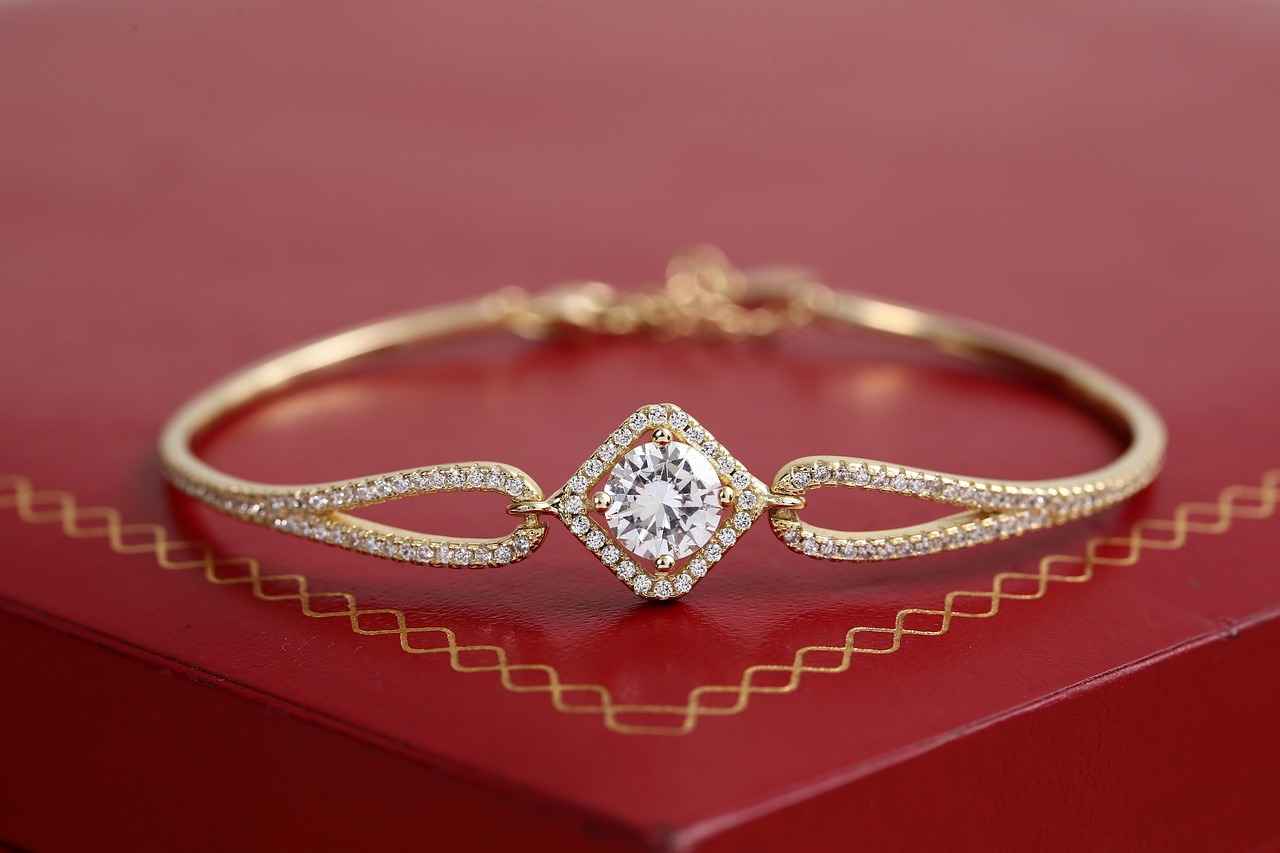
How to Care for Memorial Jewelry?
Caring for memorial jewelry is essential for preserving its beauty and significance. These cherished pieces often hold deep emotional value, serving as a tangible connection to loved ones who have passed away. By implementing proper cleaning and storage practices, you can extend the life of these meaningful items and ensure they remain in excellent condition for years to come.
Memorial jewelry is not just an accessory; it is a symbol of love and remembrance. Over time, exposure to elements such as moisture, dirt, and oils from our skin can dull its appearance. Therefore, regular maintenance is crucial to keep these pieces looking their best and to honor the memory they represent.
- Gentle Soap and Water: For most materials, a mixture of mild soap and warm water is effective. Use a soft cloth or a gentle brush to clean the jewelry without scratching it.
- Specialized Jewelry Cleaners: For pieces that require extra care, consider using a cleaner specifically designed for the material of your jewelry, such as silver or gold polish.
- Ultrasonic Cleaners: These devices can be useful for deeper cleaning but should be used with caution, as not all materials are safe for ultrasonic cleaning.
Proper storage is as important as cleaning. Here are some tips to ensure your memorial jewelry is stored safely:
- Use Soft Pouches: Store each piece in a soft pouch to prevent scratches. Avoid storing them together, as this can cause damage.
- Keep Away from Moisture: Store your jewelry in a dry place. Consider using silica gel packets in your jewelry box to absorb any humidity.
- Avoid Direct Sunlight: Keep your jewelry out of direct sunlight, which can fade colors and damage materials over time.
Frequency of cleaning depends on how often you wear the jewelry. If worn daily, a light cleaning should be done weekly, while deeper cleaning can be done monthly. For pieces that are not worn often, a thorough clean every few months is sufficient. Always check for signs of wear or damage during cleaning to address any issues promptly.
- Avoid Harsh Chemicals: Stay away from bleach or other abrasive cleaners that can damage the jewelry.
- Don’t Wear During Activities: Remove jewelry while exercising, swimming, or doing household chores to prevent scratches and damage.
- Limit Exposure to Perfumes: Apply perfumes and lotions before putting on jewelry to minimize contact with chemicals.
By following these care tips, you can ensure that your memorial jewelry remains a beautiful and lasting tribute to your loved one. Remember, each piece tells a story, and with the right care, those stories can continue to shine brightly.
What Cleaning Methods Are Recommended?
Maintaining the beauty and integrity of memorial jewelry is essential to ensure that these cherished pieces continue to evoke fond memories of loved ones. The cleaning methods you choose can significantly impact the longevity and appearance of your jewelry. Here, we delve into recommended cleaning methods tailored to various materials commonly used in memorial jewelry.
Regular cleaning not only keeps your memorial jewelry looking its best but also helps prevent the buildup of dirt and oils that can tarnish metals and dull gemstones. By following the right cleaning techniques, you can preserve the emotional significance of these pieces.
- Gold and Silver: For gold and silver jewelry, a gentle soap and water solution is often recommended. Mix a few drops of mild dish soap with warm water, soak the jewelry for a few minutes, and then gently scrub using a soft-bristled toothbrush. Rinse thoroughly and dry with a soft cloth.
- Gemstones: When cleaning gemstones, it’s crucial to know the specific type of stone as some are more delicate than others. Generally, a mixture of warm water and mild soap works well. Avoid harsh chemicals that can damage the stone’s surface. For porous stones like opals or pearls, a damp cloth is often the safest option.
- Enamel and Painted Jewelry: Enamel pieces require special care. Use a soft, dry cloth to gently wipe the surface. Avoid submerging them in water, as this can cause the enamel to lift.
- Cremation Ash Jewelry: Jewelry containing cremation ashes should be handled with care. A soft, dry cloth is usually sufficient for cleaning. Avoid using liquids that could compromise the integrity of the piece.
Specialized jewelry cleaners can be an excellent investment for maintaining the beauty of your memorial jewelry. These cleaners are formulated to be safe for various materials and can effectively remove tarnish and grime without causing damage. Always read the instructions carefully and test on a small, inconspicuous area first.
The frequency of cleaning depends on how often you wear the piece. For daily wear items, a monthly cleaning is advisable, while pieces worn less frequently can be cleaned every few months. Regular maintenance not only enhances appearance but also strengthens the emotional connection to the piece.
Proper storage is just as important as cleaning. Store your memorial jewelry in a soft pouch or a dedicated jewelry box to prevent scratches. Avoid exposing it to extreme temperatures or humidity, which can cause damage over time.
In conclusion, caring for your memorial jewelry through appropriate cleaning and storage methods is key to preserving its beauty and significance. Whether using simple soap and water solutions or investing in specialized cleaners, these practices will help keep your treasured pieces looking their best for years to come.
How to Store Memorial Jewelry Safely?
Storing memorial jewelry safely is crucial to preserving its beauty and emotional significance. These cherished pieces often carry the weight of memories and love, making it essential to protect them from damage. Here are some practical tips to ensure your memorial jewelry remains in pristine condition for years to come.
Memorial jewelry can be delicate, and improper storage may lead to scratches, tarnishing, or even breakage. By taking the time to store these pieces correctly, you can maintain their appearance and the memories they represent.
- Jewelry Box: A dedicated jewelry box with compartments is an excellent choice. It keeps your pieces organized and prevents them from tangling or scratching each other.
- Soft Pouches: For added protection, consider placing each piece in a soft pouch. This is particularly useful for delicate items or those with intricate designs.
- Anti-Tarnish Cloths: Using anti-tarnish cloths can help prevent oxidation, especially for silver jewelry. Wrapping pieces in these cloths before placing them in storage can extend their life.
Organizing memorial jewelry not only enhances its longevity but also makes it easier to find and wear. Here are some strategies:
1. Separate by Type: Group necklaces, bracelets, and rings together.2. Use Dividers: Utilize dividers in your jewelry box to keep items from touching.3. Label Compartments: If you have multiple pieces, consider labeling compartments for quick identification.
Choose a storage location that is both dry and secure. Avoid areas with high humidity, such as bathrooms, as moisture can lead to tarnishing and damage. Instead, consider these locations:
- Bedroom Drawer: A cool, dry drawer in your bedroom can be an ideal spot.
- Safe: For particularly valuable or sentimental pieces, a safe can offer the highest level of security.
- Display Case: If you wish to showcase your jewelry, opt for a display case with glass doors to protect it from dust and damage.
To ensure the longevity of your memorial jewelry, avoid the following:
- Direct Sunlight: Prolonged exposure to sunlight can fade colors and damage materials.
- Moisture: Humid environments can cause tarnishing and corrosion, particularly for metals.
- Mixing Different Materials: Storing different types of metals or materials together can lead to scratches and damage.
Regularly checking your stored memorial jewelry is essential. Aim to inspect your pieces every few months, looking for signs of tarnishing or damage. This proactive approach allows you to address any issues before they become more significant problems.
By following these guidelines, you can ensure that your memorial jewelry remains a beautiful and lasting tribute to your loved ones. Proper storage not only protects the physical piece but also honors the memories it carries.
Frequently Asked Questions
- What is memorial jewelry?
Memorial jewelry is a special piece designed to honor and remember a loved one who has passed away. It often includes personal elements that reflect their personality and memory, serving as a tangible reminder of their presence.
- Why should I choose memorial jewelry?
Choosing memorial jewelry allows you to carry a piece of your loved one with you, providing comfort during times of grief. It’s a unique way to keep their memory alive, almost like having a little piece of their spirit with you wherever you go.
- What materials are commonly used in memorial jewelry?
Common materials include metals like gold and silver, as well as gemstones and even cremation ashes. Each material carries its own significance and can be selected based on personal preference or the memory of the loved one.
- How can I personalize my memorial jewelry?
You can personalize your memorial jewelry by incorporating elements such as fingerprints, initials, or birthstones. Engraving meaningful quotes or dates also adds a unique touch that makes the piece truly special.
- Where can I find quality memorial jewelry?
Look for reputable jewelers or artisans who specialize in custom designs. Checking customer reviews and their portfolio can help ensure you find a trustworthy source for beautiful and meaningful memorial pieces.

